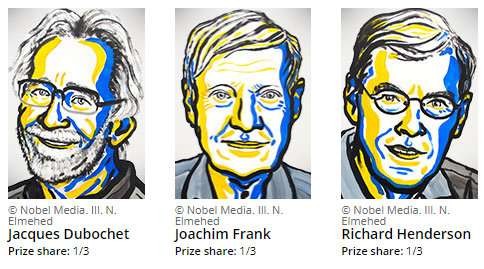The Nobel prize in Chemistry triggers a revolution in biochemistry
Hong Van -
(VOVWORLD) -The Nobel prize in Chemistry in 2017 was awarded to Jacques Dubochet, Joachim Frank, Michael Henderson on Wednesday. The three scientists won the prize for developing a technique to produce images of the molecules of life frozen in time, called cryo-electron microscopy. The technique allows biomolecules to be visualised in their natural configuration for the first time.
 photo: Phys.org photo: Phys.org
|
Henderson is a Scottish scientist and professor at the MRC Laboratory of Molecular Biology. Frank is a German-born professor at Colombia University in New York. And Dubochet is a Swiss and an honorary professor at the University of Lausanne. They made a surprise victory over studies of strong contenders such as American chemists John Bercaw and Robert Bergman and Russian researcher Georgiy Shul’pin.
Scientists said this year’s Nobel prize will open up a new era for bio-chemistry. Cryo-electron microscopy has been used to capture images of Salmonella's "injection needle" for attacking cells, proteins involved in antibiotic resistance and the molecular structures governing circadian rhythm - the subject of this year's medicine and physiology Nobel.
When researchers began to suspect that the Zika virus was behind the microcephaly seen in newborns in Brazil, they turned to cryo-EM to visualise the virus. Over a few months, 3-D images of the virus at atomic resolution were generated and researchers could start searching for potential targets for drugs.
The scientists made the microscope technology easier to apply in a general setting by processing images of the molecules in such a way that fuzzy two-dimensional images were turned into sharp, 3-D structures. They managed to cool water so rapidly that it solidified around a biological sample, allowing its natural shape to be preserved and presented the structure of a bacterial molecule at atomic resolution. Committee Chair Sara Snogerup Linse explained “Soon, there are no more secrets, now, we can see the intricate details of the biomolecules in every corner of our cells and every drop of our body fluids.”
The Chemistry award has now been awarded 108 times to 175 scientists since 1901. Only one laureate, Frederick Sanger, a British biochemist, has won the prestigious award twice in 1950 and 1980.
Hong Van